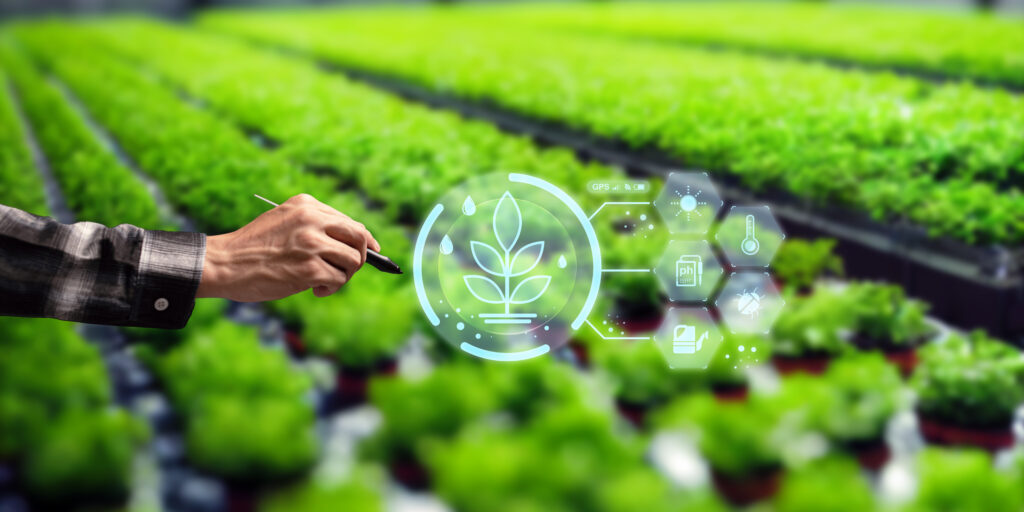Farmers are always looking for ways to increase efficiency and reduce costs on their farms, and one way they can do this is by embracing new technologies such as smart irrigation systems, climate-controlled greenhouses, and energy-efficient structures. Smart farming techniques have the potential to save farmers time, money, energy resources — even water.
By embracing these cutting-edge technologies in a cost-effective manner, farmers can reduce their impact on the environment while also improving their yields and crop quality. In this blog post, we’ll explore how smart farming technology can be used to maximize energy efficiency on your farm.
Understand how a smart farm works
Smart farming is revolutionizing the world of agriculture. It involves the integration of cutting-edge technologies, such as sensors, drones, and artificial intelligence, to optimize crop production and increase efficiency. By collecting data on weather patterns, soil conditions, and plant health, farmers can make informed decisions on the use of water and fertilizers, monitor crop growth, and prevent diseases.
Investing in a smart farm has numerous benefits, including higher yields, reduced costs, improved sustainability, and a more reliable food supply. Moreover, it enables farmers to manage their farms from anywhere in the world, using their smartphones or computers. As the demands for food rise and our natural resources become increasingly scarce, smart farming emerges as a promising solution for more productive and sustainable agriculture.

Different types of smart farms
When it comes to agriculture, technology is changing the game. One of the latest advancements in the industry is the smart farm. With a smart farm, growers can utilize different systems to maximize their crop yield and minimize their environmental footprint. Hydroponic systems use nutrient-rich water to grow plants without soil, allowing for faster growth and fewer pests.
Aquaponic systems, on the other hand, combine hydroponics with fish farming, creating a self-sustaining ecosystem where plants and fish benefit from each other’s waste. Each type of smart farm has its unique advantages and challenges, but both offer innovative solutions to traditional farming practices.
Consider solar energy as an alternative to traditional farming practices
As the world shifts towards more sustainable practices, solar energy has emerged as a promising alternative to traditional farming methods. Rather than relying on fossil fuels and heavy machinery, solar energy harnesses the power of the sun to generate electricity and provide clean, renewable energy.
This shift not only reduces our carbon footprint but also allows for a more decentralized farming system, freeing farmers from their reliance on remote power sources. By embracing solar energy as a viable option for powering farms, we can promote environmental sustainability while improving the efficiency and profitability of agriculture.
Implement strategies for minimizing energy consumption
As a farmer, you understand the importance of utilizing energy-efficient strategies to minimize energy consumption and save on costs. There are several ways you can achieve this, such as investing in solar panels to harness renewable energy or upgrading to energy-efficient machinery and equipment.
Simple changes like properly maintaining equipment to ensure they operate at optimal performance and turning off lights when not in use can also make a significant impact. Implementing a sustainable plan for energy consumption on your farm not only helps to reduce your carbon footprint but also promotes long-term financial stability for your agricultural business.
Invest in energy-efficient equipment and technologies
The pursuit of sustainability has become an increasingly prevalent theme across all industries and for good reason. Besides being environmentally responsible, incorporating energy efficiency into operations can yield significant cost savings over time. From upgrading outdated lighting systems to installing motion-activated sensors, there are numerous options to consider when it comes to investing in energy-efficient equipment and technologies.
While some initial costs may be incurred, the benefits of reducing energy consumption and improving operational efficiency are well worth it. Plus, with the rise of government incentives and rebates, now is the time to make the switch to a more sustainable approach. Ultimately, making the investment in energy efficiency not only benefits the planet but can also have a positive impact on the bottom line of any business.
Utilize alternative methods of irrigation
Water is one of our most precious resources. In many parts of the world, water scarcity is becoming an increasingly pressing issue. This is why it is so important that we explore and utilize alternative methods of irrigation. By harnessing the power of natural resources like rainwater, we can significantly reduce our reliance on traditional irrigation methods and protect our environment in the process. Techniques such as rainwater harvesting and mulching provide effective and sustainable solutions that can help us to preserve our precious water resources for generations to come.

Last Word
Smart farming is an innovative and sustainable way to grow more food with less energy, water, and equipment. In addition to traditional farming methods, such as irrigation and crop rotation, smart farmers are utilizing high-tech features like hydroponic systems and solar-powered devices to minimize inputs and maximize yields. The potential for a better future depends largely on how we use technology on the farm.
With the right strategies and investments, a smart farm can be profitable while having a significant impact on environmental conservation efforts. It is important that we incorporate these practices into our operations in order to create healthier soils, reduce greenhouse gases, save water, provide local jobs, and build healthy communities. Smart farming is the future of agriculture – one that offers solutions to many global needs.
Frequently Asked Questions
To increase energy efficiency on a farm, upgrade equipment, implement renewable sources, optimize lighting, use precision farming techniques, maintain equipment, install insulation and weather stripping, use timers and sensors, and consider energy audits.
Smart farm technologies include drones, soil sensors, automated irrigation, precision farming techniques, climate control systems, livestock monitoring, farm management software, and robotic automation. They improve efficiency, increase yields, and reduce waste.
To choose the right smart farm technology, identify needs and goals, evaluate benefits and costs, consider compatibility, assess technical expertise, research reputation, and consult with experts.

